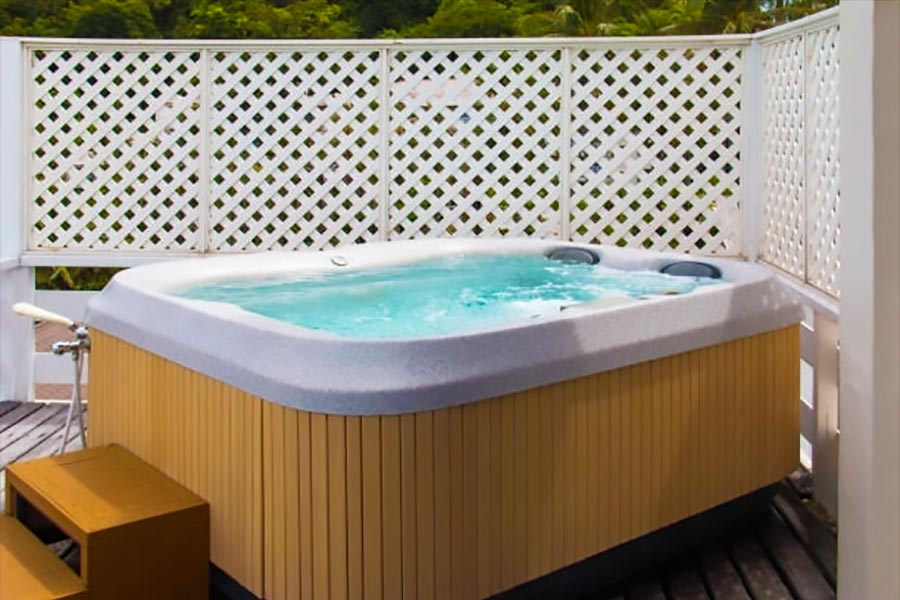Helpful Pool & Spa Advice

How Much Electricity Does A Hot Tub Use?
Hot tubs provide a relaxing and therapeutic experience, but they come with an operational cost that includes electricity usage. The amount of electricity your hot tub consumes depends on factors such as its size, energy efficiency, the frequency of use, and your local electricity rates. In this article, we will explore the average electricity usage of a hot tub and provide cost examples for different regions of the United States.
1. Factors That Affect Hot Tub Electricity Usage
The amount of electricity a hot tub uses varies depending on several factors:
- Size of the hot tub: Larger hot tubs with more jets and features consume more electricity.
- Heater efficiency: Energy-efficient heaters can reduce electricity usage.
- Frequency of use: Frequent use requires more heating and filtration, increasing energy consumption.
- Climate: Colder climates require more energy to maintain the water temperature.
Hot tubs generally use between 1.5 kWh and 7.5 kWh per day, depending on the above factors. On average, a hot tub uses about 3-4 kWh per day, which adds up to approximately 90-120 kWh per month.
2. Calculating The Monthly Cost Of Running A Hot Tub
To calculate how much it will cost to run your hot tub, you'll need to know the cost per kilowatt-hour (kWh) in your area. The average price of electricity in the United States is about $0.13 per kWh, but rates vary by region. Multiply the number of kWh your hot tub uses per day by your local electricity rate to determine the daily cost, then multiply that by the number of days in the month.
For example, if your hot tub uses 4 kWh per day and your electricity rate is $0.13 per kWh, it will cost $0.52 per day to run the hot tub. Over 30 days, this adds up to $15.60 per month.
- Daily cost = kWh used per day x electricity rate
- Monthly cost = daily cost x number of days in a month
3. Electricity Costs By Region: Northeast
In the Northeast, electricity rates are generally higher than the national average. States like New York and Massachusetts have rates that can reach $0.20 per kWh or more. For a hot tub that uses 4 kWh per day, the monthly operating cost could be as high as $24 per month.
- New York: 4 kWh/day x $0.21/kWh = $25.20/month
- Massachusetts: 4 kWh/day x $0.22/kWh = $26.40/month
In colder climates like the Northeast, the hot tub may require more energy to maintain the water temperature, particularly during winter, further increasing the overall electricity usage and cost.
4. Electricity Costs By Region: Midwest
In the Midwest, electricity rates tend to be closer to the national average, around $0.13 per kWh. For a hot tub using 4 kWh per day, the monthly cost would be about $15.60 per month.
- Illinois: 4 kWh/day x $0.13/kWh = $15.60/month
- Ohio: 4 kWh/day x $0.14/kWh = $16.80/month
Midwestern winters can be harsh, so hot tubs may require additional energy during colder months to maintain the desired temperature, increasing energy costs during those periods.
5. Electricity Costs By Region: South
The Southern United States generally enjoys lower electricity rates, averaging around $0.11 per kWh. This makes running a hot tub more affordable, with a typical cost of around $13.20 per month for a 4 kWh/day hot tub.
- Texas: 4 kWh/day x $0.11/kWh = $13.20/month
- Georgia: 4 kWh/day x $0.12/kWh = $14.40/month
Because Southern states often experience milder winters, less energy is required to keep the hot tub warm, particularly when compared to colder regions. This can result in lower overall electricity costs year-round.
6. Electricity Costs By Region: West
Electricity rates in the Western United States can vary significantly. States like California tend to have higher rates, averaging $0.20 per kWh, while states like Oregon and Washington have lower rates, around $0.11 per kWh.
- California: 4 kWh/day x $0.20/kWh = $24.00/month
- Washington: 4 kWh/day x $0.11/kWh = $13.20/month
In states like California, where electricity costs are high, using energy-efficient hot tubs or solar-powered heaters can help reduce overall expenses. On the other hand, more affordable electricity in states like Washington makes hot tub usage more economical.
7. How To Reduce Hot Tub Energy Costs
There are several ways to minimize the electricity usage of your hot tub:
-
Use an energy-efficient cover: A well-insulated cover can help retain heat and reduce the need for constant reheating.
-
Lower the temperature when not in use: Keeping the temperature a few degrees lower when the tub is idle can save energy.
-
Use energy-efficient pumps: Consider upgrading to energy-efficient models like Balboa spa pumps or Lingxiao pumps to reduce electricity consumption.
-
Turn off the jets when not needed: Jets can increase electricity usage, so only use them when you're in the hot tub.
-
Regular maintenance: Keeping your hot tub clean and well-maintained ensures that it runs efficiently and uses less energy.
Key Takeaways:
- Hot tubs typically use 3-4 kWh per day, resulting in a monthly usage of 90-120 kWh.
- The cost of running a hot tub varies significantly by region, with the Northeast and California having the highest electricity rates.
- The South and parts of the Midwest offer more affordable electricity, with rates as low as $0.11 per kWh.
- Use an insulated cover, lower the temperature when not in use, and upgrade to energy-efficient pumps to reduce electricity costs.

